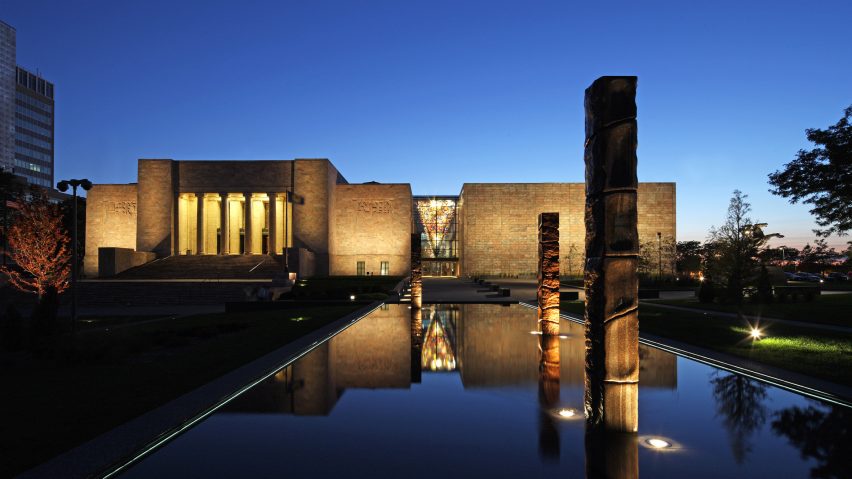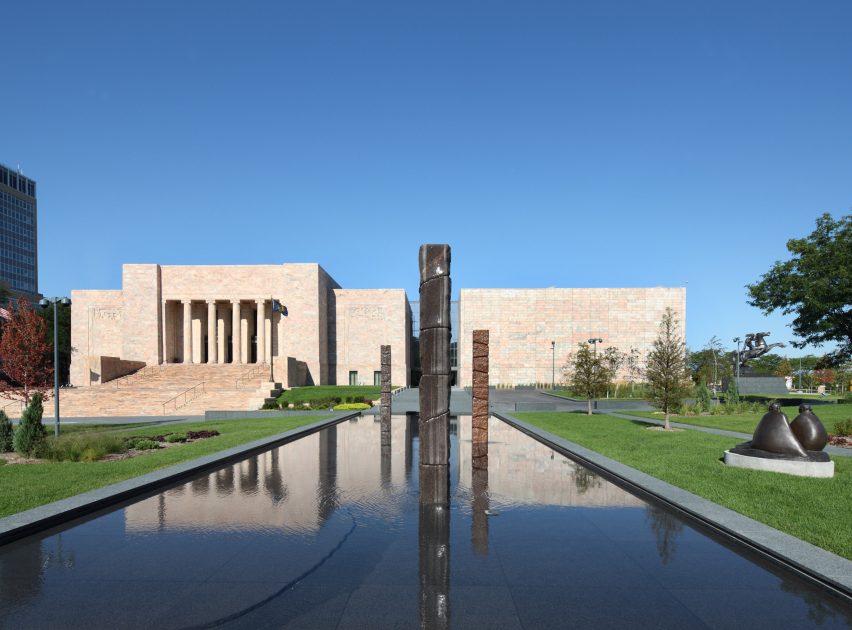
Snøhetta picked to expand Nebraska's largest art museum
Architecture firm Snøhetta has been selected to extend the Joslyn Art Museum in Omaha, Nebraska, which comprises a pink marble 1930s building and a pavilion by Norman Foster.
The expansion of the Joslyn Art Museum – the Midwestern US state's largest art museum – is intended to accommodate a growing artwork collection of over 12,000 works, public programmes, and visitor numbers that have increased since the museum introduced general free admission.
"The museum is one of Nebraska's greatest assets, and this project will allow it to be and do more... show more art, welcome more people, elevate the museum visitor experience, offer many more teaching moments," said Joslyn Art Museum executive director Jack Becke in a statement.
Snøhetta to pay "utmost care and respect" towards existing buildings
Snøhetta's design will mark the second addition to the Joslyn Art Museum's art-deco-style building, which opened in 1931 as a gift to Omaha from local philanthropist Sarah Joslyn, in memory of her late husband George.
The building – originally called the Art Deco Joslyn Memorial – was designed by architect father-and-son team John and Alan McDonald and remains an important example of the decorative 1930s style. Key features include its Georgia Pink marble construction, and 38 different marble types inside.
As collections and attendance grew, British architect Norman Foster was enlisted to build an additional wing – becoming his first project in the US. It was completed in 1994 and is named the Walter and Suzanne Scott Pavilion.
The Joslyn Art Museum chose Snøhetta to complete the third structure in recognition of the firm's experience with projects like the extension to Mario Botta's San Francisco Museum of Modern Art.
"Snøhetta is an outstanding firm, and a perfect fit for this project, not only for their visionary design, but also for their commitment to honouring the legacy of the Museum and celebrating what Joslyn means to us, to our city, and to Nebraska," said Becke.
"This physical and programmatic expansion will happen with the utmost care and respect for the two remarkable and beloved buildings that presently comprise Joslyn."
Expansion follows spike in museum attendance
The Joslyn Art Museum has experienced a growth in visitor numbers, after introducing free year-round general admission to the public – an original vision of its founder – in 2013. The museum reported 190,000 visits in 2017.
Programming in Snøhetta's scheme will expand exhibition space to make a more enjoyable experience for this growing, contemporary audience, as well as more space to showcase its collection. Among the other aims is to make existing galleries more flexible.

The project is also intended to allow the museum to expand its community initiatives, such as art-based educational activities like studio classes and public programmes.
These will accompany a host of existing public facilities – including a 1,000–seat concert hall, a fountain court, an education technology gallery, plus a lecture hall, classrooms, sculpture garden, café and shop.
"Together with Joslyn's rich collections of art spanning the globe and its dynamic relationship with the communities that sustain it create a powerful platform to begin designing the next phase of its life, for future generations," said Snøhetta founding partner Craig Dykers.
Design to draw on "great landscape of the American West"
Design details are yet to be revealed, but Dykers suggests that the structure's aesthetic will draw on surrounding natural terrain.
"Omaha's place in the great landscape of the American West is a wonderful inspiration to us," he said.
Founded in Oslo, Snøhetta has completed a number of works in the US, including the transformation of Times Square, and was recently tapped to renovate an historic station in Detroit.
The firm also revealed a set of controversial plans to overhaul Philip Johnson's AT&T Building in New York – an icon of postmodernism – last year. But the project has been halted, following a major outcry against the proposal that resulted in the building gaining landmark status.